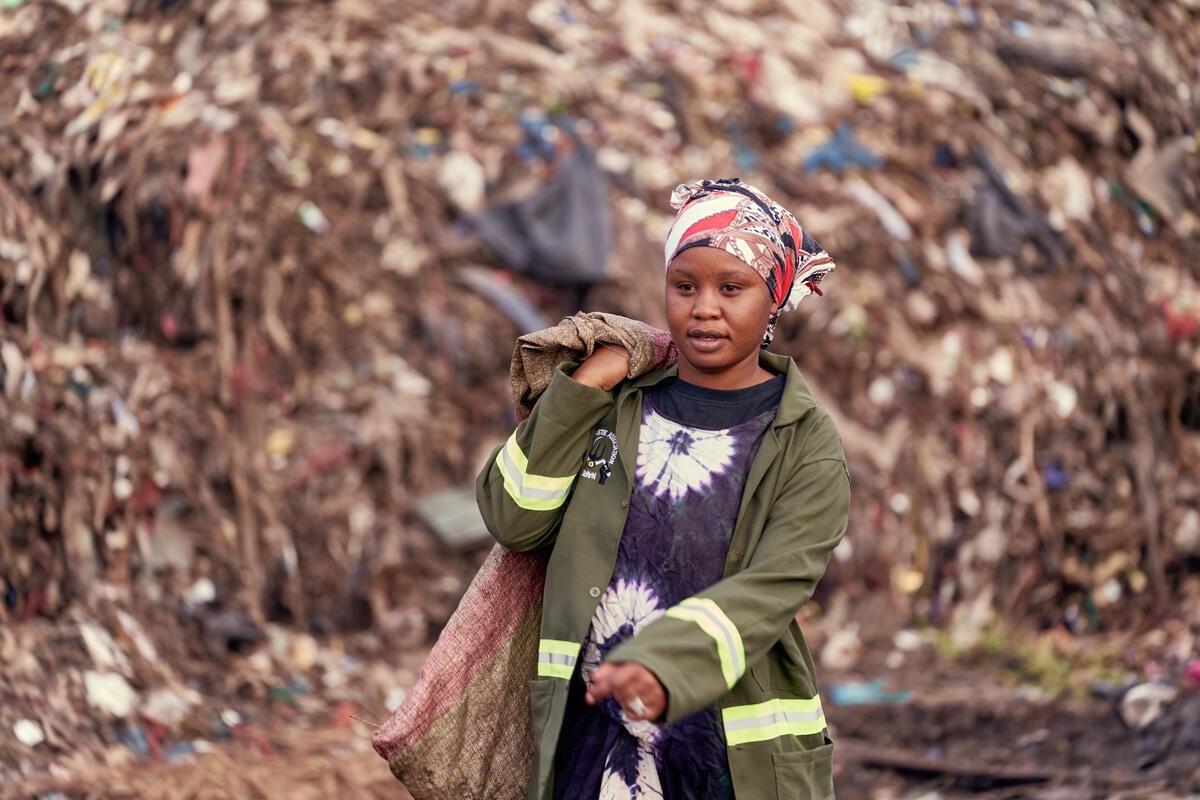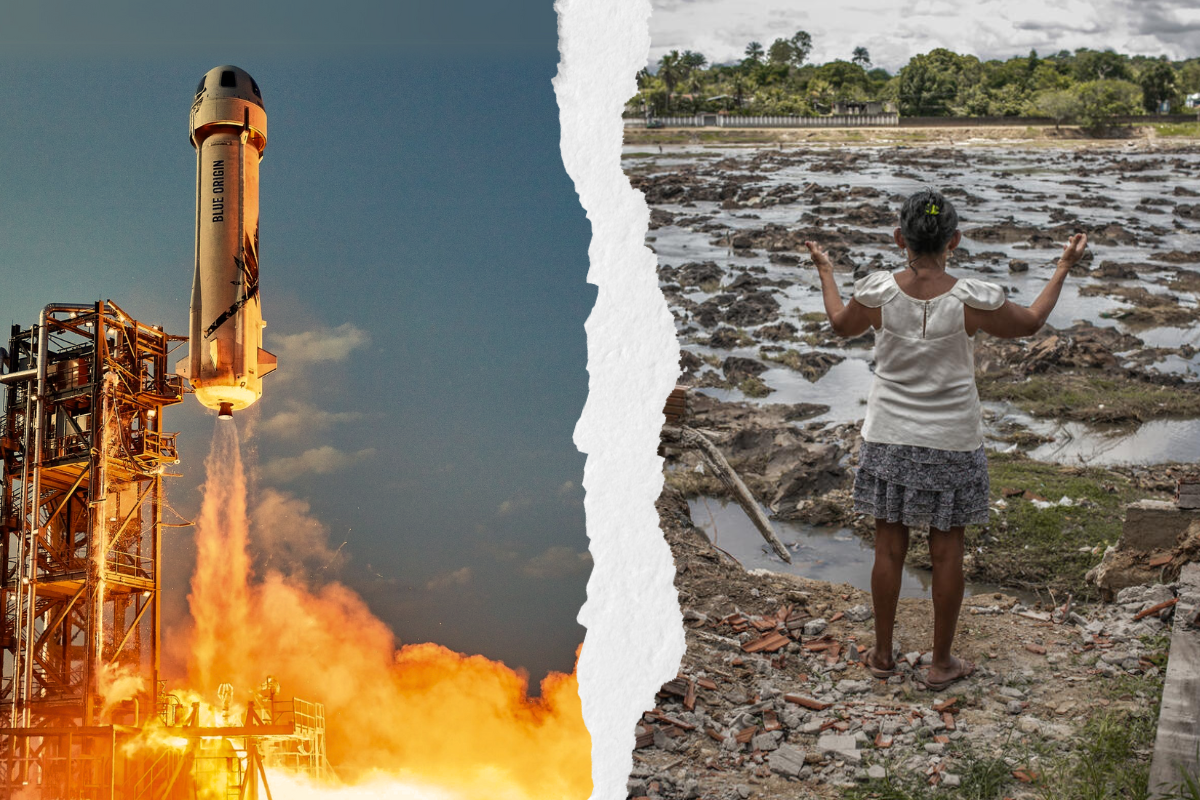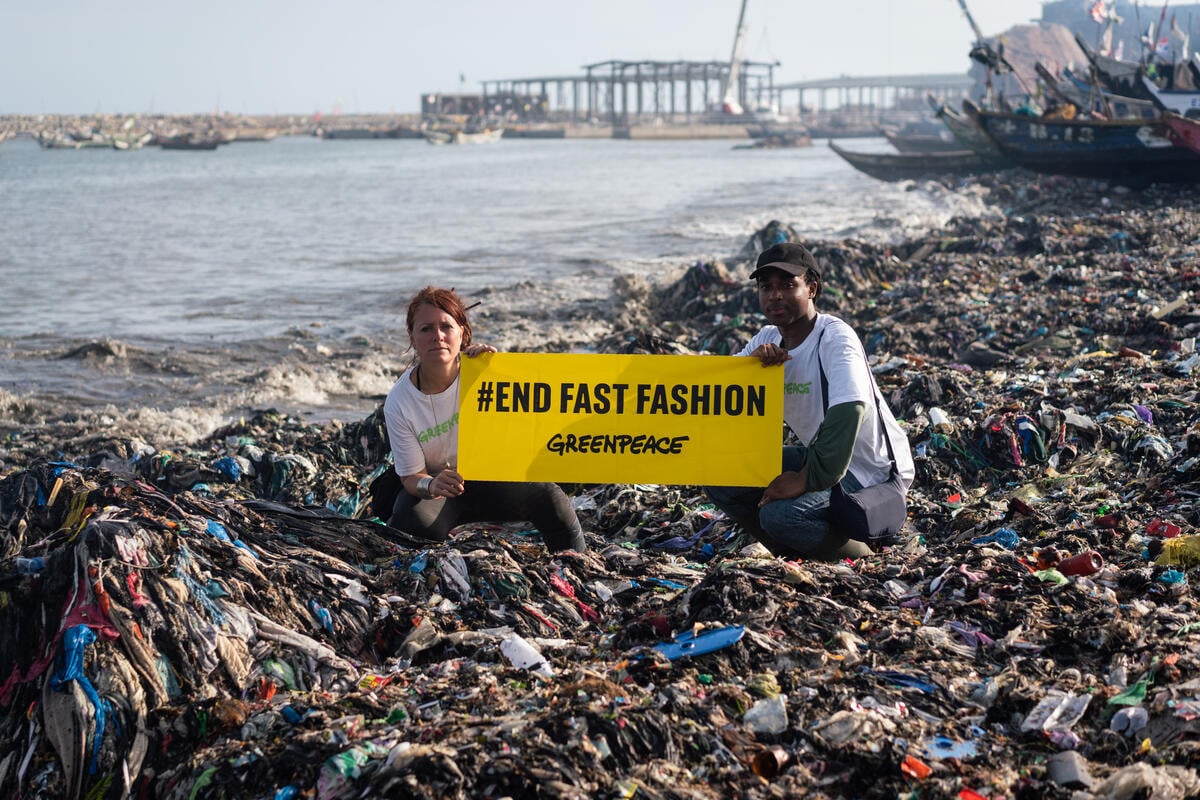This time last year I was standing on a riverbank that was literally made of clothes waste, sifting through the rags with fellow researchers in Nairobi, Kenya. Something caught my eye in the homogenous mass of waste – a label which said ‘Conscious’. A sad end for an item of clothing, which could have been made better, loved more, passed on and repaired – and when it was really no good anymore, taken apart so that the precious resources it was made of could be recovered and recycled.
People in Kenya and other countries of the Global South are being overwhelmed by the growing flood of used and rejected clothes from wealthier countries, at volumes well beyond the needs and demands of local markets. Over the years they have become less and less useful; while the imported clothes used to be of good quality, now they are poorly made, or stained, broken and unusable. They are nothing less than plastic waste dumping, bringing a series of disasters – polluting waterways with microplastic fibres, catching on fire in the huge landfills and poisoning the air, or blocking the drains during downpours and aggravating flooding.
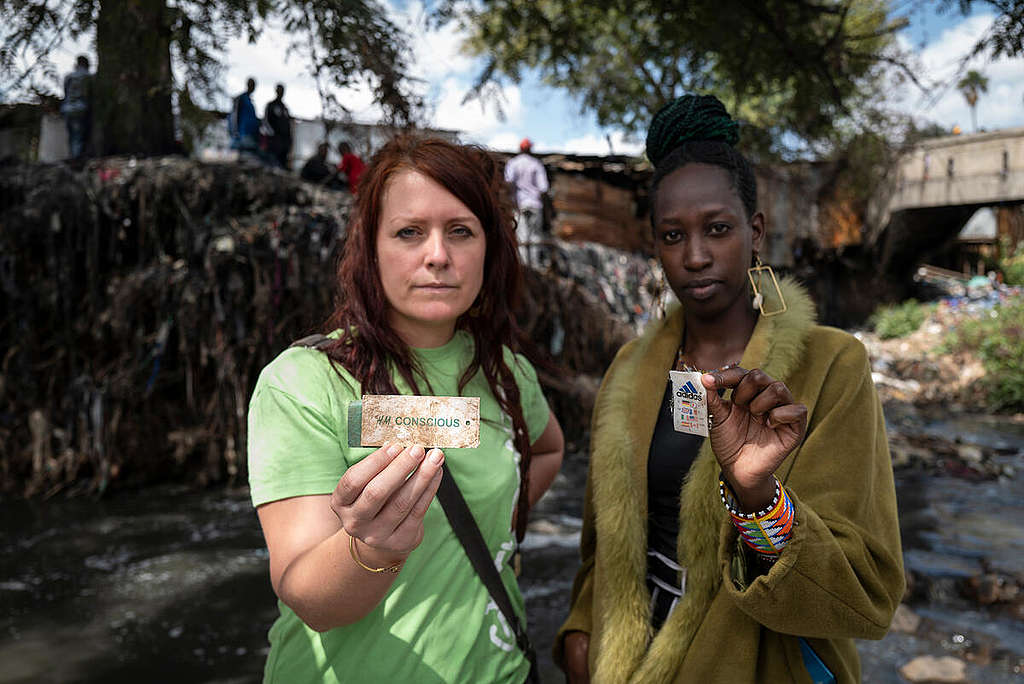
Fast fashion exploits workers and will never be green or sustainable
But fashion is no stranger to disaster. Ten years ago today, 1134 people died in the collapsed clothing factory Rana Plaza in Bangladesh. Considered the biggest modern catastrophe in the fashion industry, these people died making clothes for Western consumers.
This tragedy has come to symbolise the devastating impacts of fast fashion, not only on workers in supply chains but from the whole life cycle of fashion which exploits people and nature from the cradle to the grave. It led to the creation of Fashion Revolution, now the world’s largest fashion activism movement, which has the engagement of many non-governmental organisations (NGOs), including Greenpeace.
Garment workers, most of whom are women (making up approximately 80% of the workforce in the garment industry) have been raising their voices and mobilising for years to ask for change, better working conditions, greater union rights and fair and living wages. Survivors of the Rana Plaza collapse are also speaking out and calling out brands that haven’t contributed to compensation or changed their business practices.
Our contribution was the successful Detox My Fashion campaign, which unveiled the insidious pollution of waterways and toxic exposure of workers in the global supply chain. We confronted global brands and retailers with this reality – and together with Detox supporters, activists and NGOs from around the globe and their creative protests, petitioning and advocacy, we broke the silence around hazardous chemicals in the manufacture of clothing – and convinced 29 brands to sign a ‘Detox commitment’ to achieve zero discharges of hazardous chemicals into waterways and eliminate their use at supply chain factories.
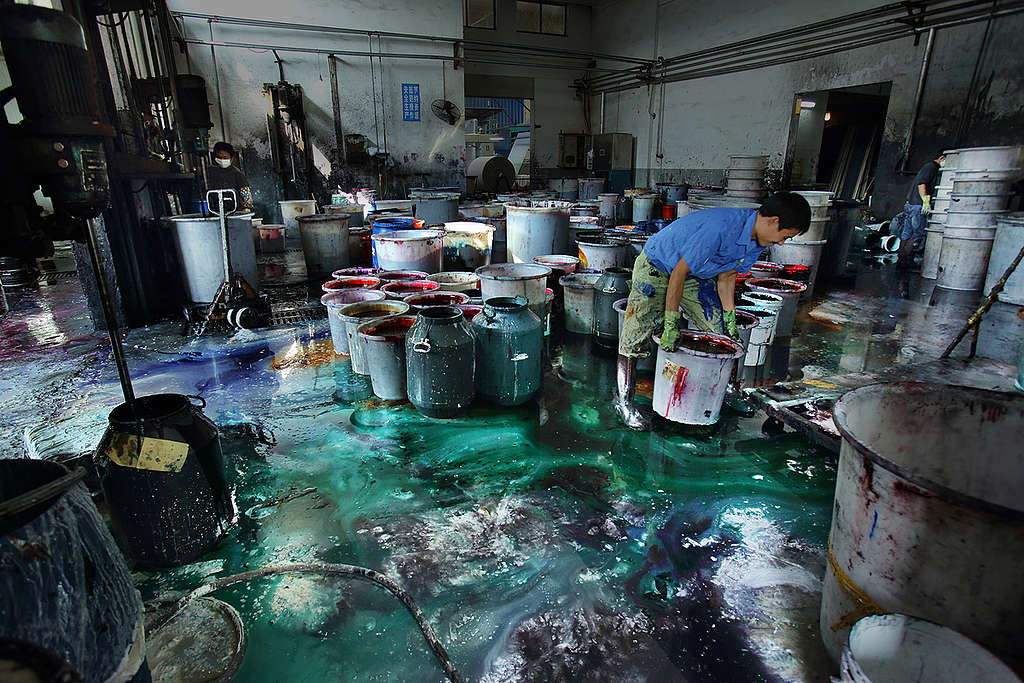
We sowed a seed that is still growing – there is definitely a before and after Detox in the fashion industry. However, we quickly realised that it was not enough, we were tackling the ‘fashion’ but not yet the ‘fast’, this ever-accelerating flow that extracts resources to make garments that are then consumed and discarded as fast as possible, and finally sent far away to become someone else’s problem. So we started focusing on this destructive linear business model and called on brands to ‘close the loop’ on the throughput of material resources, but first of all to ‘slow the flow’.
By then, ‘circularity’ had already become a buzzword. With the EU finally giving value to the idea of optimising the use of depleting resources, fashion brands jumped on the bandwagon. Yet they took the path of least resistance, making magical promises about closing the loop using non-existent recycling technologies for their plastic fossil-fuel reliant polyester apparel, while the flood of clothes waste from wealthy countries to the Global South continued, disguised as charitable donations.
As for slowing the flow, this was a job for green marketing. Growing cotton with the tiniest environmental and social improvements became ‘sustainable cotton’. Recycling plastic bottle waste (what a relief for the food industry) became ‘responsible materials’ – and a great way for those microplastic fibres to speed their way into the ocean. And to hell with the complications of growing fair-trade organic cotton and textile-to-textile recycling! The ‘growth’ show must go on!
Is this a matter of financial resources? Does the fashion industry lack capable and willing engineers and sustainability teams? No, the profits are huge and during our campaign we have met many dedicated people working for fashion brands or other organisations, who want to change the world as much as we do; but the money gets funnelled up to careless shareholders and what’s left mostly gets spent on recolouring Hell on Earth in green.
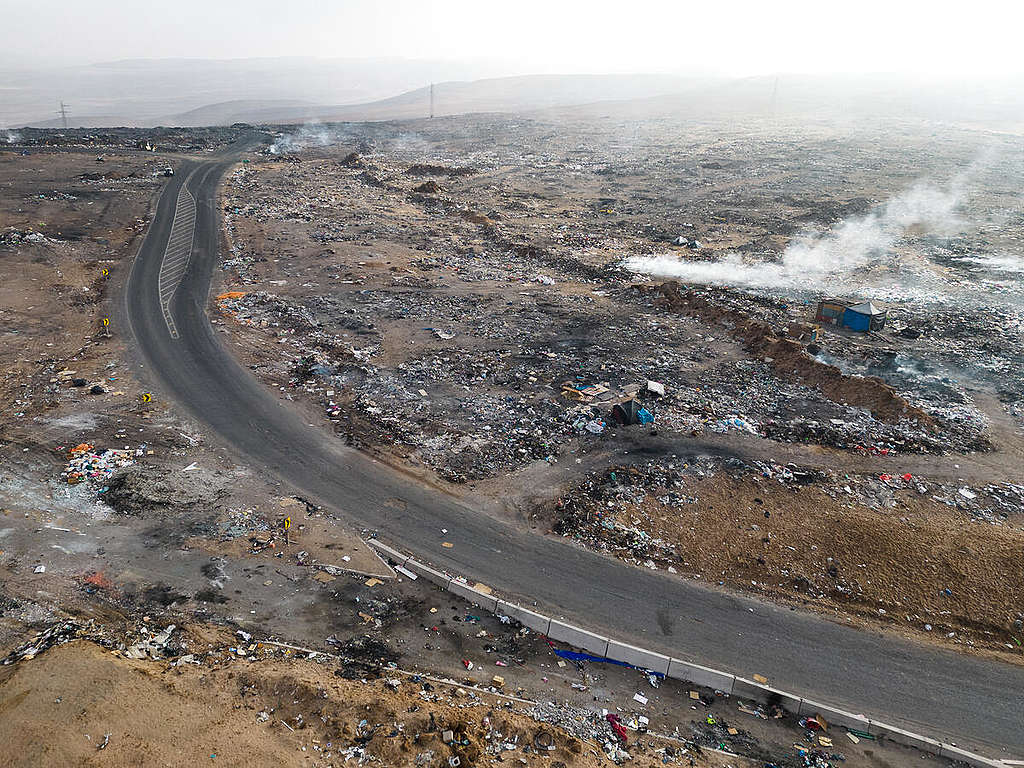
Ten years after the Rana Plaza disaster, the fast fashion industry is still crushing workers, greenwashing itself and destroying the planet
Where are we today? A snowstorm of communication with little connection to reality, glossy collections, or tiny, niche activities. Involve some famous designers! It’s so much more sexy than talking about the hazardous chemical burden, non-recyclable waste and invasive microplastic pollution, or the conditions for workers and waste pickers. So in the end the status quo remains the same, on target for 206 billion pieces by 2030.
Brands even use these initiatives to sell their ‘green’ products – promotion tools that hide the truth about the destructive fast fashion system, with consumers as the target. We decided to investigate some of these self-assessed marketing labels, to see whether the terms such as ‘Sustainable’, ‘Green’ or ‘Fair’ can be justified or backed up by better production conditions in the fashion supply chain. Our report– out today – finds that the majority did not meet the criteria for credibility, and are in a ‘Greenwash danger zone’.
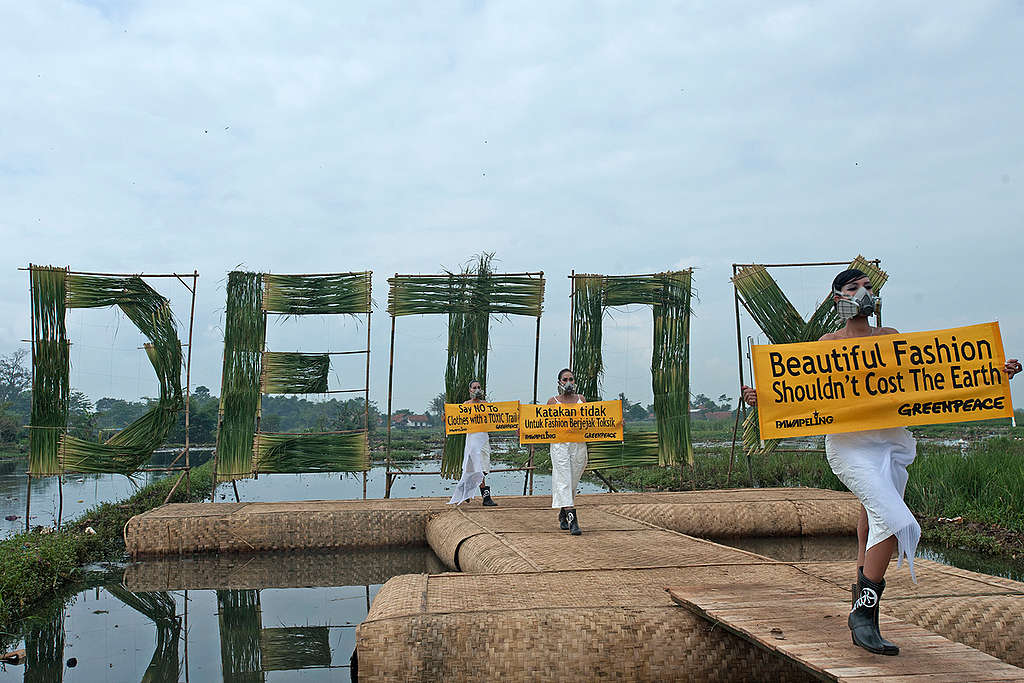
But we did find some true gems among the shiny baubles and fakery – and some hints for a better direction. Credible brand labels from Vaude, Coop, with German retailer Tchibo also close to hitting the mark – back their claims with the best standards available today, and offer more options to consumers that want to be part of the solution – better quality, durable clothes, and choices to rent, to buy second hand, and to repair them. We also detected the beginnings of a true movement towards traceability, through product labels and webshop information for consumers that shows where the clothes are made and how – right back to the cotton fields.
These signs are not only from the leaders; the brand H&M, a by-word for fast fashion, has the beginnings of a traceability system, along with a newcomer on Greenpeace’s fashion radar, Italian brand Calzedonia. While there’s a lot to do to make this traceability more credible, it’s our dream that the wastewater data from the thousands of suppliers that work with Detox-committed brands will be part of this traceability system too – just as we at Greenpeace already do with our own textiles procurement.
Change won’t happen in a day – it is not easy for big companies to shift to a completely different business model. But in the meantime fashion needs to cut out the greenwash and concentrate on the fundamentals – facts and figures, transparency and traceability – the true bottom line when it comes to tackling the multiple planetary crises and the only possible basis for credible change. This is the least that is owed to the victims and survivors of Rana Plaza.
Rana Plaza survivors, including some who lost limbs or were disabled in the factory collapse, laid wreaths today for those lost and repeated their demands for compensation and legal redress during protests in Dhaka marking 10 years since one of the world’s worst industrial disasters.
Viola Wohlgemuth is a Circular Economy and Toxics Campaigner at Greenpeace Germany.

